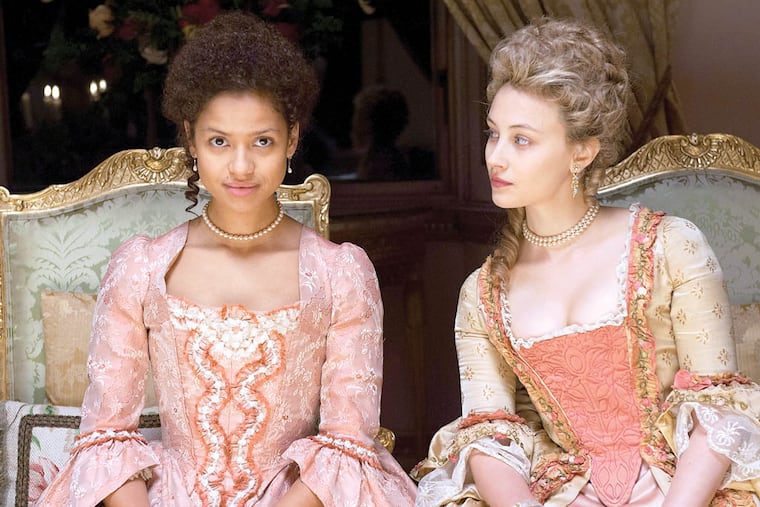'Belle': True story makes race-y costume drama
"Belle" is the fascinating true story of an Anglo-African aristocrat coming of age in 18th-century England.

DESCRIBING a movie as a history lesson is often a way of belittling it.
Here's an exception: "Belle," based on the true story of Dido Elizabeth Belle (Gugu Mbatha-Raw), an 18th-century Anglo-African woman fathered by a British aristocrat, brought back to his ancestral estate and raised to receive some, but not all, of the privileges her bloodline confers.
Though raised and educated as an elite, she faces prejudice brought on by the circumstances of her birth and also her mixed-race lineage - Belle comes of age in British society at a time when the issue of slavery is hotly debated. In fact, her guardian and grandfather (Tom Wilkinson) is a jurist charged with deciding the politically charged case of an insurance company refusing to pay the claim of a slave-ship operator who threw his human cargo overboard (one of the first legal dominos to fall in a series of decisions that led to abolition).
That's the history; "Belle" gives us romance, too. Dido and cousin Elizabeth (Sarah Gadon) have a period-appropriate preoccupation with marriage and prospects. We know from Jane Austen that the human algebra of such courting is hard enough - factor in Belle's race, background and place in a gathering political storm, and you've got quite a daunting narrative.
"Belle" works hard to keep track of all the angles, and perhaps that's why it often seems a little too on-the-nose, racing from one piece of exposition to another, actors hitting only the most important note.
But the movie gets more rewarding as it goes. One fine scene has Belle acknowledging her peculiar place in society - elevated by her station, confined by it, bewilderingly privileged in proscribed ways, frustratingly denied her full humanity in others.
Actress Mbatha-Raw finds herself in these scenes, and the cast in general is tops.
And the final scene - the unveiling of a portrait of Belle and Elizabeth - carries real emotional weight. The images dissolve to reveal the actual portrait of the two women, its subjects looking out at us from history as loving equals.
"Belle" brings to the overly familiar trappings of the British costume drama a completely new set of moral considerations (Merchant and Ivory meet Ebony and Ivory). It makes a history lesson well worth learning. The facts of the legal argument contained in "Belle" are interesting, and mirror the way the new book The Empire of Necessity in this country has reignited interest in the case of the 1805 slave revolt aboard the ship Tyral, recounted in Melville's fictionalized account of it, Benito Cereno, now argued by many as a masterpiece on a par with Moby Dick.